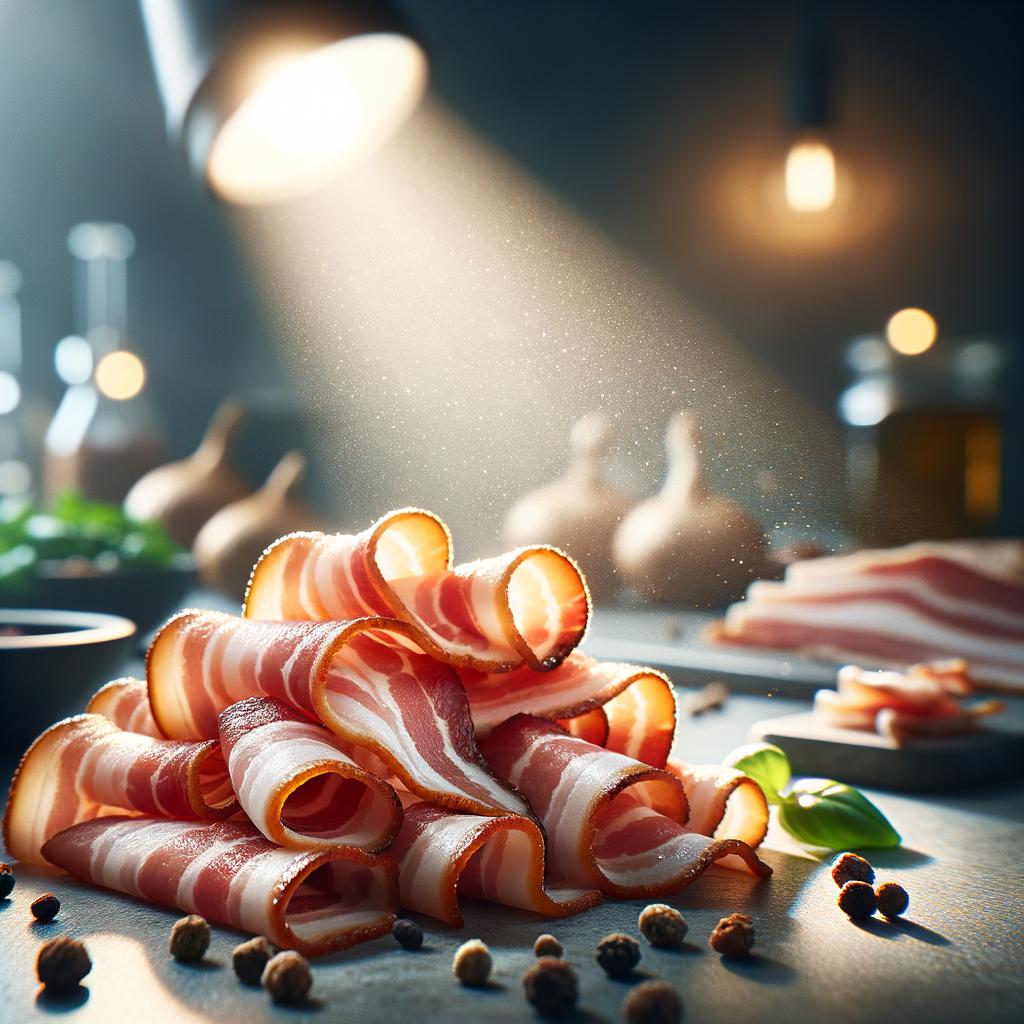Lardons or Bacon

Description
Lardons, often referred to as the "little gems of flavor", are small strips or cubes of fatty bacon or pork fat. These tiny treasures are typically about a quarter-inch wide and an inch long, with a pleasingly firm texture that turns delightfully crisp when cooked. Their flavor profile is a marvelous melody of smoky, salty, and slightly sweet notes, with an underlying umami that brings a depth of flavor to any dish they grace. Unlike regular bacon, lardons are often cut from the belly of the pig, giving them a higher fat content that renders beautifully in the pan, leaving behind a treasure trove of flavorful drippings.
Primary Uses
Lardons are the unsung heroes of many culinary masterpieces, their smoky, rich flavor adding depth to a wide range of dishes. In French cuisine, they are a key component of classic dishes like coq au vin and quiche Lorraine. Beyond the borders of France, they are used to add a savory punch to pastas, salads, and stews. They also serve as a flavorful garnish for soups, and their rendered fat is a prized cooking medium. Beyond the culinary world, lardons have a certain cultural significance, particularly in France, where they are a symbol of comfort food and home cooking.
History
The history of lardons is as rich and layered as their flavor. Originating in France, they have been a staple of French cuisine for centuries, their use dating back to the Middle Ages. They were a practical solution for preserving meat in an era before refrigeration, and their high fat content provided much-needed calories during the harsh winter months. Over time, their use spread across Europe and to the New World, evolving from a necessity to a delicacy. There are stories of French chefs who would carry their own stash of lardons when traveling, to ensure they could always add that special touch to their dishes.
Nutritional Information
While lardons are undeniably rich in flavor, they are also high in fat and calories. However, they do provide a good source of protein and are packed with several B vitamins, particularly B1, B2, B3, B5, B6, and B12. They also contain trace minerals like zinc, iron, and selenium. Despite their high fat content, lardons, like other pork products, contain a mix of both saturated and unsaturated fats. When consumed in moderation, they can be part of a balanced diet. Compared to regular bacon, lardons are often less processed, making them a more wholesome choice.

